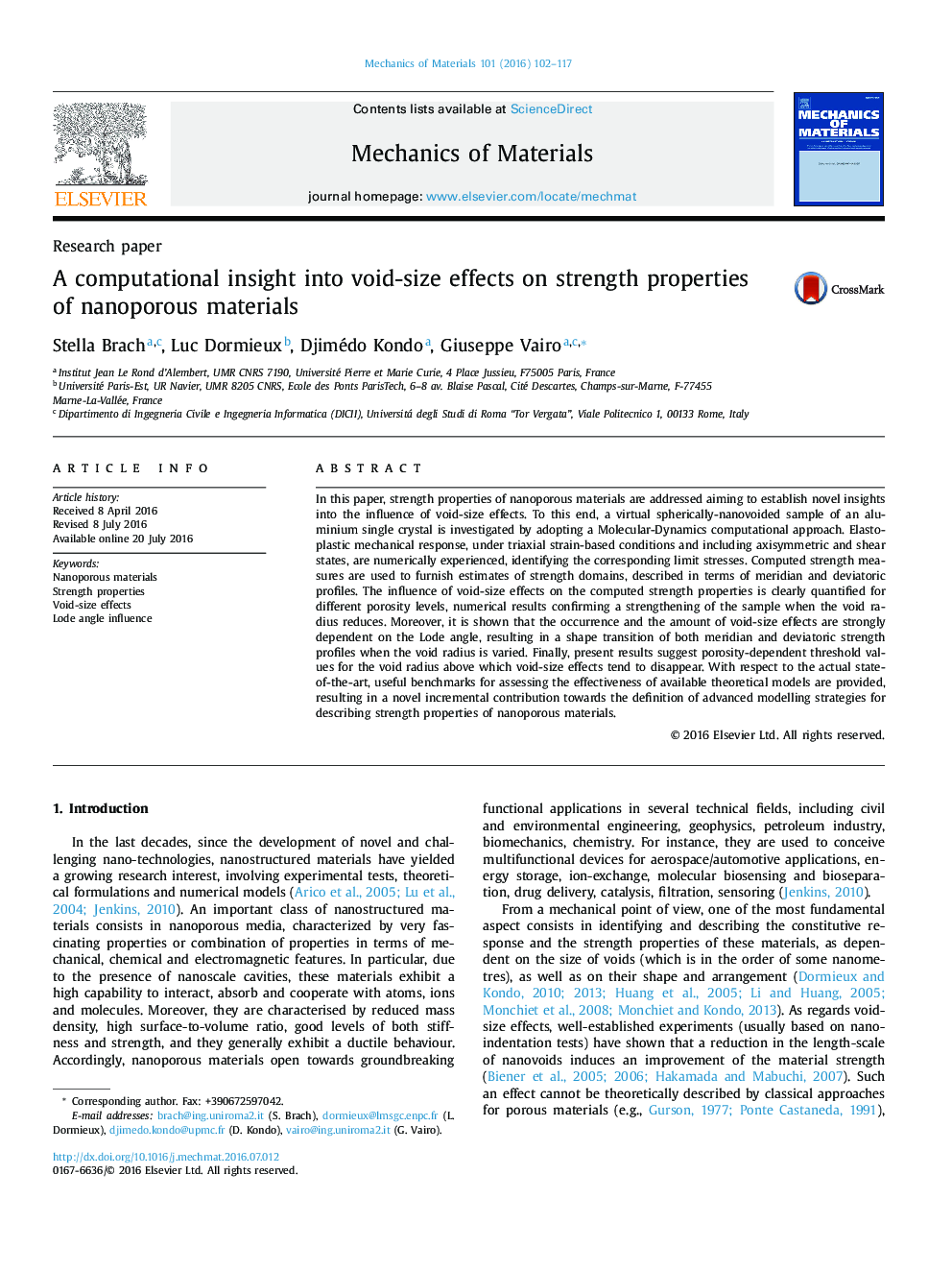| Article ID | Journal | Published Year | Pages | File Type |
|---|---|---|---|---|
| 799484 | Mechanics of Materials | 2016 | 16 Pages |
•Strength features of computational nanovoided single-crystal samples are investigated.•Triaxial strain conditions, including axisymmetric and shear states, are considered.•Void-size effects induce sample strengthening and shape-transition of 3D strength domains.•Strength measures highly depend on all the three Haigh–Westergaard stress invariants.•Indications for assessing theoretical strength models for nanoporous materials are furnished.
In this paper, strength properties of nanoporous materials are addressed aiming to establish novel insights into the influence of void-size effects. To this end, a virtual spherically-nanovoided sample of an aluminium single crystal is investigated by adopting a Molecular-Dynamics computational approach. Elasto-plastic mechanical response, under triaxial strain-based conditions and including axisymmetric and shear states, are numerically experienced, identifying the corresponding limit stresses. Computed strength measures are used to furnish estimates of strength domains, described in terms of meridian and deviatoric profiles. The influence of void-size effects on the computed strength properties is clearly quantified for different porosity levels, numerical results confirming a strengthening of the sample when the void radius reduces. Moreover, it is shown that the occurrence and the amount of void-size effects are strongly dependent on the Lode angle, resulting in a shape transition of both meridian and deviatoric strength profiles when the void radius is varied. Finally, present results suggest porosity-dependent threshold values for the void radius above which void-size effects tend to disappear. With respect to the actual state-of-the-art, useful benchmarks for assessing the effectiveness of available theoretical models are provided, resulting in a novel incremental contribution towards the definition of advanced modelling strategies for describing strength properties of nanoporous materials.
